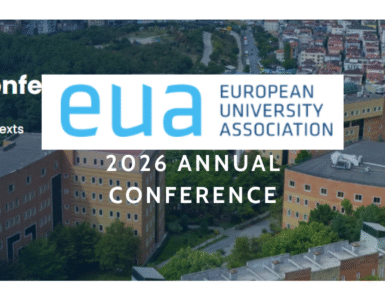by Michael Searson, SITE/AACE Board, USA.
In March 2023, Bill Gates posted to his blog that “the age of AI has begun” (Gates, 2023). Of course, AI has been with us for many years. However, the release of ChapGPT in November 2022 did prompt unheralded attention to the potential of artificial intelligence, especially, when it comes to the large language generative AI model (Marr, 2023, May 19).
By winter 2023, it was clear that AI would continue to have a profound impact on society, including education. Given the contemporaneous impact of generative AI, leaders from the Society for Information on Technology and Teacher Education (SITE) decided to publish a book on GenAI in education. The book Exploring New Horizons: Generative Artificial Intelligence and Teacher Education (Searson, Langran, & Trumble, 2024) features contributions from international authors, examining the diverse applications and challenges of generative AI in education. It advocates for a balanced, ethical, and critical approach to integrating AI in educational settings, aiming to prepare future educators for a landscape where AI enhances educational quality.
The book covers six key areas:
- Applying Frameworks to Impact Teaching Practices
- Creating Guidelines and Examining Ethical Issues
- Moving Toward Meaningful Practice
- GenAI and the Teacher Education Researcher
- International Perspectives
- Practical Applications
As the nearly year-long process of writing and publishing the book transpired, both editors and authors, at times, expanded their focus beyond Gen AI to the more general topic of artificial intelligence. This broader approach has led the US National Technology Leadership Summit (NTLS) to include a strand on an interdisciplinary approach to artificial intelligence across key subject areas in its fall 2024 meeting. This activity is part of a process that will lead to the publication of an AACE book tentatively titled AI in Teacher Preparation: Across the Disciplines to be published in early 2025.
Likewise, the attention to AI spurred by the release of ChatGPT forced educators to address the potential of artificial intelligence as a tool for learning. How to effectively and productively integrate artificial learning in education remains a complex issue with varying approaches. Some educators have taken a cautious path banning or limiting access to AI tools in learning settings. This approach is reminiscent of how many educators steered away from developing and teaching critical analyses of social media in a meaningful and relevant way. With educators ignoring their role in addressing a powerful social medium, learners largely constructed knowledge and habits on their own, often in peer-driven and mainly unregulated environments. Educators are advised not to repeat this behavior when it comes to artificial intelligence. Is it not better for students to have their inevitable informal learning experiences with cutting-edge technologies augmented by formal educational activities? When it comes to integrating AI into learning experiences, educators should not repeat past practices such as reserving powerful educational technology experiences for “after-school” or “club” activities. Rather, they should fully and robustly integrate artificial intelligence into an interdisciplinary curriculum. Additionally, when it comes to AI, educators need to move beyond the development and articulation of dogmatic acceptable use policies to more robust and relevant productive use policies.
When interacting with those who seek to avoid addressing artificial intelligence in education, I sometimes remind them. “You may not use AI, but AI is using you!” This statement serves three purposes:
- It reminds people that they are likely engaging with AI tools through everyday interactions, with or without their knowledge. Such interactions range from formal writing activities to composing an email; from making a customer service call to using new photo software on their mobile devices; from using an app on a mobile device when traveling to making bank transactions.
- AI is here to stay. For better or worse, it will continue to have a profound impact on society, influencing the current and future workforce.
- Disregarding the role of AI in learning is not a responsible approach for educators to adopt in the education of their students. Of course, an AI “curriculum” should include a critical analysis.
At this point with artificial intelligence, educators are at a critical crossroads – whether to be reactive or proactive. Based on the premise that AI is a formidable factor in today’s world – and will continue to be so – educators would be better positioned to critically and constructively embrace AI when engaging with students. After all, the education of today’s children will be profoundly impacted by AI, through formal and informal means. It’s time for educators to get in the game!

Author
Michael Searson, SITE/AACE Board, USA.














